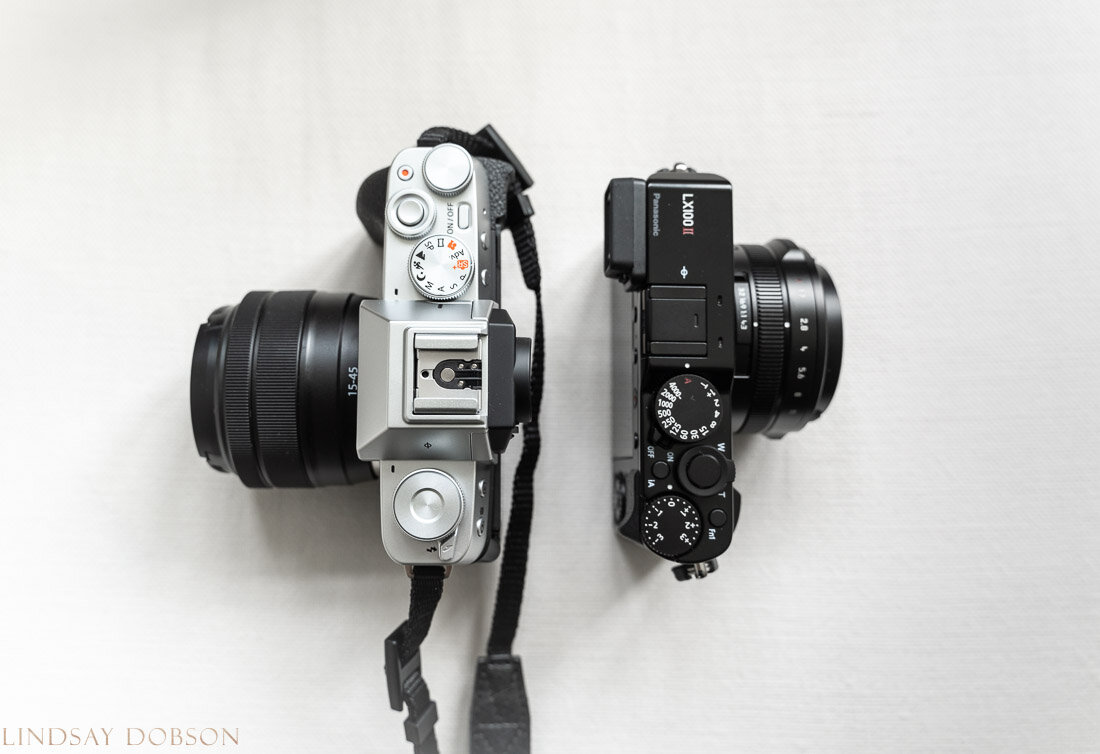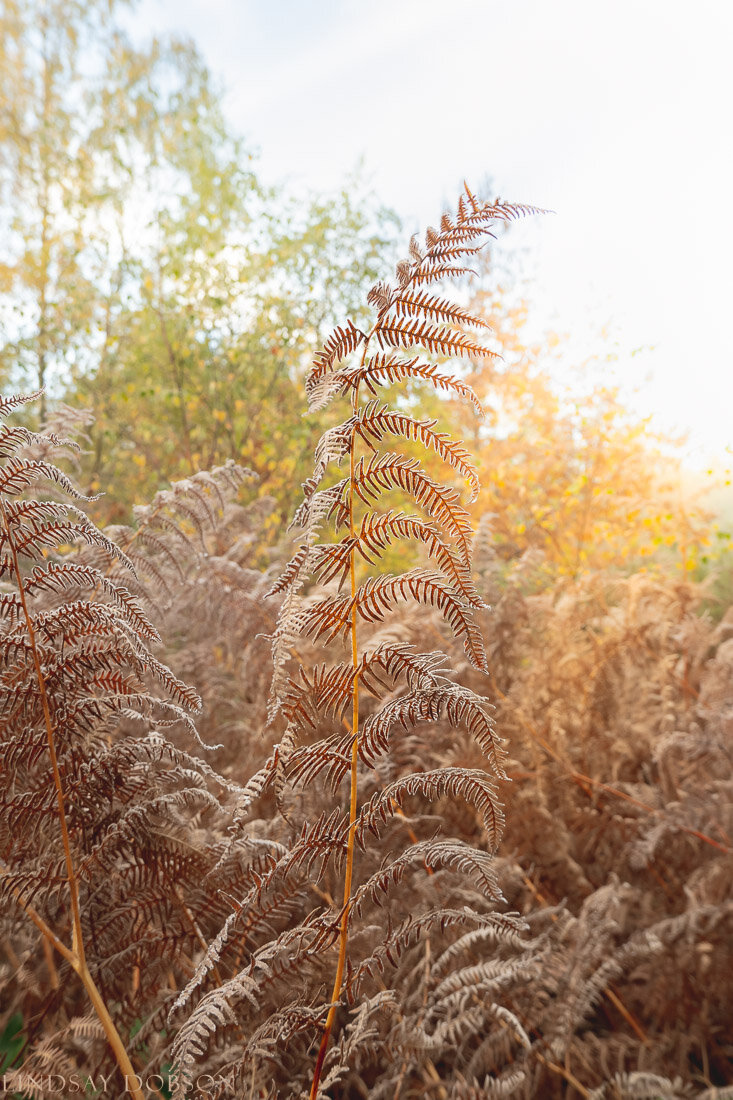Fuji XT200 vs Panasonic LX100 MkII
Fuji XT200 vs Panasonic LX100 MkII | Best Mirrorless Travel Cameras
Since most professional photographers are normally using very well specified cameras in their jobs, it can be hard to find a satisfying smaller system for recreational use. However as the years have rolled on the number of small and portable options have grown in number and quality. In the past I’ve written about my buying decisions when it comes to a personal camera. It’s that time again, and I’ve just moved on from my much loved and well respected Panasonic LX100ii.
At this point I’ll reiterate that our camera decisions should be based on our own needs and preferences, and that can vary considerably from person to person. Therefore what might suit me very well may not be the best choice for the next person. Physical handling and access to our most used controls are perhaps the biggest part of that. There’s little point investing in a highly capable camera if you find it fiddly, or if you have to pause every time you need to change settings.
I tend to replace my cameras every couple of years, this minimises depreciation and the proceeds of one sale is used to enable the next. Selling my Panasonic LX100ii is a real wrench and something of a considered decision, because the LX100ii is one fantastic and incredibly powerful little camera. It has a high quality lens covering the traditional 24 to 70 range, with a fast maximum aperture of f1.7 to f2.8. The autofocus is blazingly quick and incredibly accurate in AF-S mode. It has a nice viewfinder, plenty of manual controls and custom buttons, 4K video (albeit cropped) and Panasonic’s associated 4K photo features, very close focusing capability and lovely build quality. And it’s small enough to easily slip into a coat pocket or any of my handbags. There really isn’t much to complain about. However over the years I’ve learnt more about my priorities and the situations where I’m most likely to want the best from my portable camera.
Relevant to this discussion is a recent event in my career. In September 2020 I was very proud to gain a second Fellowship distinction with the British Institute of Professional Photography, in the social documentary category. Broadly speaking social documentary includes elements of street photography, landscape photography, and travel photography. This Fellowship was photographed entirely with whichever compact camera I happened to have in my pocket, handbag, or car at the time. This included cameras such as the Panasonic GH1, Olympus OMD E-M5, Oly E-M10, Panasonic LX100, Panasonic LX100ii, Panasonic GM5, and Sony RX100ii. It was an entirely candid and spontaneous exploration of my local coastline and one where travelling light and blending in was a given. Some of the cameras I used were ancient by today’s standards (but competent enough for the task). What better way to celebrate this particular distinction, than purchasing a tool well suited to this kind of work.
The value in having a small camera I can carry about, on any day of the week, has been exemplified in many of the awards I’ve won over the years. I simply wouldn’t have got the vast majority of those photographs had I not had ‘something’ available to me at the time. Our choices have now broadened to the point where we would rarely be constrained by the limitations we might have experienced with smaller systems in the past. My decision-making process for replacing my Panasonic LX100ii with the Fujifilm XT200 is set out below.
Deciding Which Compact Mirrorless Camera System to Buy
As things stand in 2020, I’m certainly not short on options. Incidentally none of the options I considered include Micro 4/3 systems. Technology has moved on and Micro 4/3 is now but one of several small competent systems (I still own and love my Panasonic GX8). I spent several years as a brand ambassador for Olympus, and in that period we had little competition when it came to the size/quality equation. But times have changed, and I like to explore new options.
As somebody who shoots professionally with Sony, you might be wondering why it didn’t make sense for me to get something like a Sony a6400 as my handbag camera. After all, it’s a terrific little machine and would do double duty as a second camera or backup for work. Well, I sold my Sony a6300 for a number of reasons, and those reasons would apply equally to its successor. Despite high levels of customisation I found the dial and button configuration fiddly and the lack of a joystick is another factor. I just didn’t enjoy the handling. Because of the placement of the right command dial the aperture value would constantly change itself with the merest touch against my body. I had to assign a ‘lock’ to this dial, which would fix the value, but I’d have to go through the process of unlocking before I could change it. Another sticking point (for me) with Sony APS-C cameras is the viewfinder. This might sound strange, because these cameras have very good viewfinders – but on the axxxx range they don’t suit my particular pair of eyes. Despite having fairly good eyesight the icons and numbers are just too small and close together, I would experience eyestrain after a while. The Fuji XT200 has a fairly standard viewfinder, but I find it pleasant to use and it’s very easy to read.
Incidentally the viewfinder is one reason why I wasn’t going to consider the newly released full frame Sony compact A7C. The viewfinder, pared back controls, and lack of a joystick are off-putting for me (plus I don’t want to lug around full frame lenses).
I’ve had a love hate relationship with Fuji over the years. Having tested and reviewed some of Fuji’s X-Trans offerings my enchantment quickly dwindled to the point where I realised any Fuji camera with an X-Trans sensor would never cut it for me. My feelings are the same irrespective of which software I use for processing the RAW files, and I’m not about to become a JPEG shooter. There’s more on this here: Fuji X-Trans Processing Artefacts
Fuji’s feature sets are now satisfyingly comprehensive. The lenses have always been superb, and I’m delighted to say that Fuji’s phenomenal Bayer sensors are showing in their entry level systems. Fuji - thank you thank you thank you - no matter how competent the performance of your cameras became, X-Trans is a deal breaker for me. Hence my decision to purchase the Fuji XT200, and not the more comprehensive XT3/XT30.
In making this decision to switch from the Panasonic LX100ii to the Fuji XT200 there have been some losses but several gains. Over time we learn about our needs and priorities and I feel the trade-off is likely to be very worthwhile.
Fuji XT200 and Panasonic LX100 II
Am I Losing Out by Swapping my Panasonic LX100ii for the Fuji XT200?
The most obvious tradeoff is pocketability. That isn’t to say that the Fuji won’t fit into a large coat pocket, but it won’t fit into a hoodie pocket (or any of my evening bags for that matter). It is however light enough to carry around in my regular daytime tote or messenger bag. Overall, the difference in size and weight isn’t huge.
The next thing I’m giving up is a measure of customisation. The LX100ii has several customisable function buttons where I can assign the operations I use the most. The Fuji XT200 has two custom buttons on the back of the camera (the large dial on the top left of the camera can also be programmed). The Quick menu on the LCD is also customisable and my most used features are quick to change in this way (such as ISO, white balance etc). I’ve assigned the Q menu to one of the blank function buttons. Unfortunately there isn’t a way to set up a back button focus on this particular Fuji (focus lock is not the same as focus-on).
What about giving up the excellent Panasonic Leica f1.7 to f2.8 lens on the LX100ii? We know that as sensor size increases depth of field at any given aperture value will become shallower. We also know that as sensor size increases the amount of noise at any given ISO value should decrease. How does this affect my move from a 4/3 sensor (actually the LX100ii sensor is slightly smaller than four thirds due to its multi aspect feature) to an APS C sensor? In lens terms there is approximately a two stop difference between the Panasonic built in lens and my Fuji 15-45 kit lens. The increased sensor size on the Fuji will give me approximately one stop of shallow depth of field benefit at like aperture values, and around a stop in ISO advantage (my tests in fact indicated that it’s a little more than a one-stop advantage with the Fuji sensor). The benefit however is that I can change lenses on the XT200, swapping to a small and light fast prime. I’ve just ordered the legendary Fuji 35mm F1 .4 prime lens (I’ll report back on the autofocus performance).
There’s no doubt that the build quality of the LX100M2 is excellent. The build quality of the Fuji XT200 is nicer than expected, but it’s an entry-level camera with a cheaper price point than the Panasonic so I can’t expect the same level of ruggedness.
Panasonic LX100M2 vs Fuji XT200 | The Things I’ve Gained
The most obvious benefit in switching to the Fuji XT200 is the larger APS-C sensor. The sensor in the LX100M2 is very good indeed - but in resolution, noise, colour, and dynamic range it’s no match for Fuji’s utterly fantastic Bayer array technology. I would go so far as to say this is the best APS-C sensor I’ve seen (and I’ve reviewed some good ones). It has the same ‘velvetness’ I came to love from my Fuji X100 (MkI).
The Fuji XT200 has an absolutely stunning fully articulating LCD screen. If you like your screens, you’ll swoon over this one. It’s great for selfies as well, if you’re into that kind of thing. It’s also handy if you like to get down low when photographing nature or smaller subjects.
A biggie for me is Fuji’s inclusion of a joystick. As somebody who frequently needs to move her focus points around, this is fantastic to have. It isn’t a particularly tactile joystick, but it does the job quite well. Note that the LX100M2 doesn’t have a joystick or a movable LCD – and my Sony a6300 was fiddly when changing settings on the fly. Overall I find the Fuji XT200 quick and easy to use and navigate, with enough customisation to suit my personal use needs.
I find eye detection works better on the XT200 than my LX100ii (but it’s not on par with Sony). Overall the subject tracking on the XT200 is pretty good and is better than the Panasonic LX100ii.
Being able to switch out the lens is another benefit of the XT200 (budget allowing). Fuji has some great options for building a small lightweight travel kit. The consumer grade zooms offered by Fuji are generally superior when compared to their competitors, although they can be a little more expensive.
I’ve now got those gorgeous Fuji film simulations to enhance my videos (when I get around to learning video). Don’t expect the video features of the XT200 to meet that of some of its competitors though. As far as I can see there’s no focus tracking in video (aside from face and eye detection) which I think is a big oversight - hopefully that can be rectified in firmware. On the plus side the 4K video from the Fuji XT200 is very nice indeed, whereas the Panasonic LX100ii 4K video is cropped in camera.
Here are my first snaps from the XT200:
Fuji XT200 Image Quality, RAW
The RAW images have a lovely neutral rendering with slightly warmer shadows - colours are rich and accurate. The RAW files are fairly flat looking on import into Adobe Lightroom (and even flatter in Capture One Pro) but adding one of the Fuji profiles on import (instead of relying on the default Adobe profile) gives you a very pleasing starting point. Noise levels are very low indeed, even at high ISO values, as you can see when I pitted the XT200 against the Sony a7Riii.
My first outing was a dawn walk around my local woods. Autofocus is fast with the kit lens and extremely accurate, there were no missed shots. Very occasionally there’ll be a ‘double lock’ when focusing in dim areas, but overall it’s very good (though not as fast in AF-S as the incredibly speedy Panasonic LX100M2). Exposure is accurate, and a little brighter when compared to my other cameras (Panasonic GX8, Sony A7Riii, Canon 200D).
Despite the fact this camera is touted as an “entry-level” body, it has a reasonable level of complexity which I suspect will appeal only to the most technical of newcomers. I think the main target audience of this camera will simply put it into one of the auto modes and leave it there. That said, I can see more than a few professionals buying the XT200 for personal use and as a very competent backup for portraits and weddings. The menus are quite easy to navigate, and whilst this camera has a pared back feature set compared to its slightly bigger brothers, it’s by no means basic. Feature-richness is very much the strength of the Sony axxxx line, albeit with a trade-off in handling and direct manual controls.
Conclusion
If your priority is size and flexibility, then the LX100M2 will probably suit you better than anything else currently out there. But if you want a fantastic sensor, a class leading articulating LCD screen, very respectable performance, gorgeous looks, and a system you can grow into - then the XT200 represents phenomenal value for money.
I’m pretty blown away by my new XT200. It makes me want to go out and take pictures - I haven’t experienced that for a long time due to general tiredness and burnout. That’s how I want to feel when I buy a new personal use camera. My Panasonic LX100M2 did that for me (although it’s time for a change), my Sony a6300 didn’t, my Fuji XT20 didn’t either.
I’ve learned over the years that size is important to me, but I can make some minor compromises there if it means I’ll benefit in other areas.







